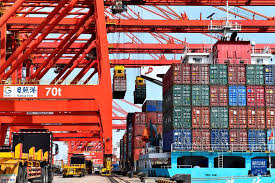Widgetized Section
Go to Admin » Appearance » Widgets » and move Gabfire Widget: Social into that MastheadOverlay zone
China has set a GDP target of 5% this year to foster higher-quality growth
China’s economic growth target for this year was set at around 5% in a government report delivered by Premier Li Keqiang as the annual “two sessions” kicked off in March. Five percent is an impressive growth rate for most of the world, especially developed economies, but some experts say the target is too conservative. According to the Japanese media, the Chinese government’s stance is that it attaches importance to a realistic recovery in view of the current economic situation affected by the epidemic. Analysts assessing China’s economic trajectory this year say they believe the country is committed to fostering higher-quality growth. It will give priority to restoring and expanding consumption, the report said.
This year’s 5% target attracted a lot of attention when it was announced, partly because it was lower than almost all institutions and economists had predicted; On the other hand, both within China and in the international community are trying to interpret what the message is.
Expectations for a quick recovery are high. Given the low starting point in 2022, the modest growth target of “around 5 per cent” should be relatively easy to achieve. It carries a twofold message: on the one hand, the era of rapid economic growth in China is probably over; China, on the other hand, is shifting its focus from purely numerical growth to the quality of its economic development.
Chim Lee, China analyst at the Economist Intelligence Unit, said the group expected China to easily exceed the 5 per cent target, with real GDP growth expected to reach 5.7 per cent.
Zhuang Tailiang, associate professor of economics at the Chinese University of Hong Kong in Hong Kong, believes that this year is a rebound year for China’s economy. In fact, it should be more than 6 percent, and even 7 percent may be touched. Zhuang said that after the outbreak, people started to move, which will bring a recovery in transportation, accommodation, tourism and retail consumption, which is a natural rebound. The data back up this assessment. According to value-added tax invoices issued by China’s Taxation Administration, sales of consumption-related industries during the holiday jumped 12.2 per cent from last year.
The Financial Times said China would aim for economic growth of “around 5 per cent” in 2023. This year’s target, if achieved, would represent a recovery from just 3 per cent growth in 2022.
“I think the overall government Work report is a reassuring message to foreign investors that China is still a good place to do business,” said Willie Lamm, a China policy expert at the Jamestown Foundation.
According to a report on the website of the German newspaper Neue Deutsche Zeitung, China is trying to find a new growth model.
“This growth target heralds the return of real GDP growth as the organizing principle of economic and financial policy, but it also signals the end of the era of breakneck growth,” said Eswar Prasad, a senior fellow at the Brookings Institution.


